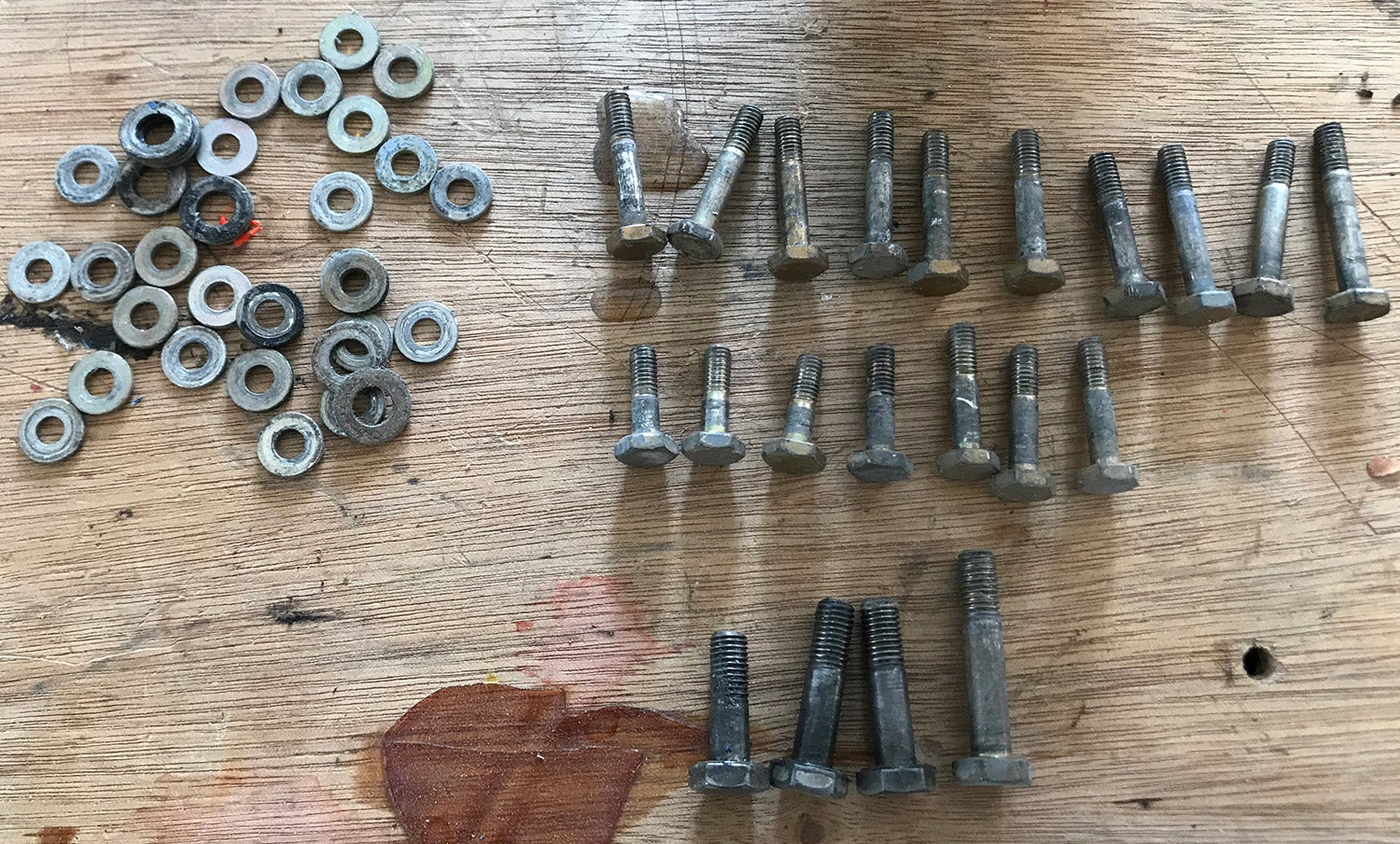There comes a time in the life of every nut and bolt when it is time to retire. There’s nothing wrong with this, no negative stigmas should be attached to the decision. Bolts literally give their lives to allow us to stay in the air, and their companion nuts keep those bolts securely on the job. And let’s not forget the lowly washer – those stalwart assistants that keep nuts and bolts in their proper places and relative spaces. Washers, by nature of their simple lives, might stay on the job a bit longer than their co-workers – but truthfully, why make them slave on when their colleagues have gone on to greener pastures?
Standard AN hardware is cadmium plated, giving it that youthful golden glow when we first take it out of the package. Over the years, the glow fades, and wear sets in, exposing the primary steel to the elements, and reducing the corrosion resistance that engineers designed in when they specified the fastener in the first place. Nylon lock nuts, in addition to losing their luster, can lose their grip. Even if the nut has been installed without being removed for many years, the nylon itself can age and lose its rotational resistance. Nothing lasts forever.
This assortment of hardware attached the tail feathers to our RV-6, built and first flown just a shade over thirty years ago. It was time to remove the tail to carry out a service bulletin, and since every single surface had to be removed, it only made sense to dip into the hardware drawers and replace not only the nuts (due to nylon aging), but the bolts (due to simple wear), and while we were at it, why not go into the fresh washer drawers (we’ve got thousands of the little critters) and go all new? It’s so nice to put classy, clean hardware into cleaned-up parts, all at the same time. That way, we figure it all should be good for an other thirty years!
Meanwhile, the old soldiers will go to the retirement bin – its not practical to re-plate the bolts, and the nuts will be buried with full military honors. Bolts might be painted orange, and be used for fit-up work on future projects. The washers will be cleaned and those that are still properly plated can go back onto standby service – and might see retirement jobs for household use. After all – we might have high standards for hardware that keeps us in the air, but we still need to honor that which has kept us there in the past.














I’m in the process of something similar. While I’m rebuilding the Frieberger Ron’s 1, I’m replacing the hardware that’s been in there for the better part of 50 years. Yes, nice fresh hardware just gives me a good feeling.
Good suggestion for the retired bolts. Mark them orange for use in a mock-up or form.
I am the Son of Ron Freiberger and would like to find a way to get in touch with the Current Owner of the Ron’s 1